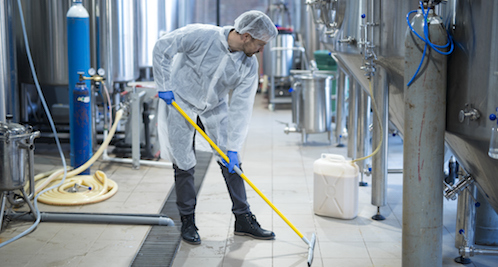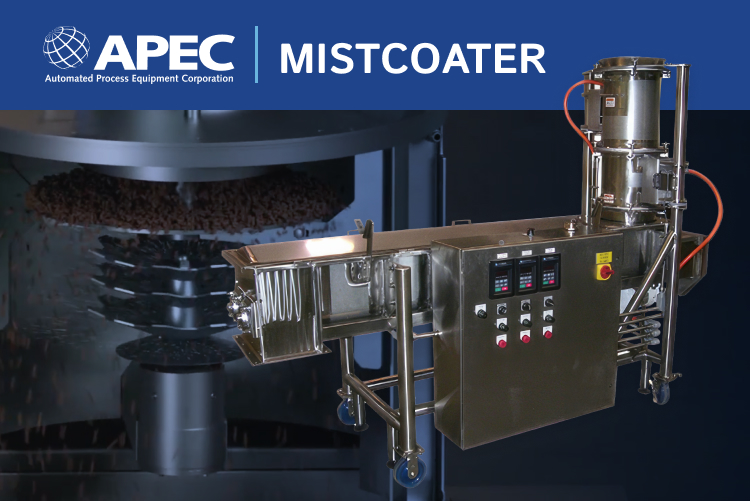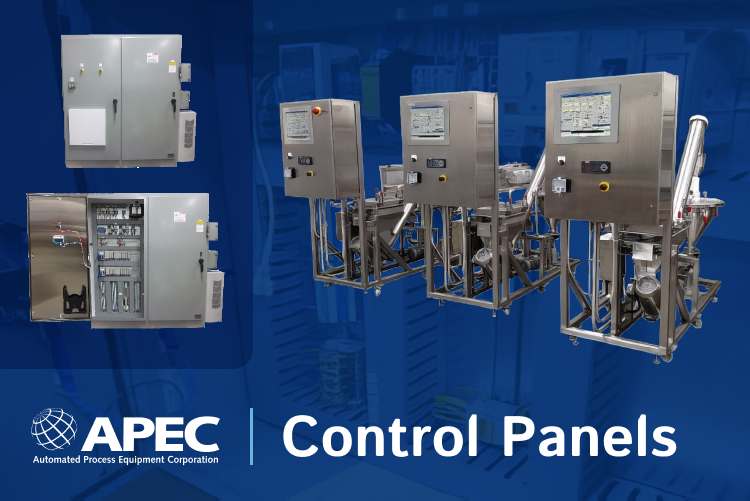
Clean, safe food and a clean, safe work environment are important in processing food for human consumption as well as animal consumption. Many of the rules and guidelines for maintaining sanitation and preventing workplace hazards are the same between both of these environments. Taking precautions to create a sanitary pet food processing plant and prevent workplace hazards also has similar benefits; a good reputation, avoiding expensive fines, reducing downtime and improving efficiency. Be aware of these sanitation and workplace hazards in pet food processing, and you can take advantage of these benefits.
4 Key Sanitation and Safety Regulations in Pet Food Processing
1. HACCP and FSMA
A hazard analysis and critical control points (HACCP) assessment is an essential part of food safety, and a major component of the Food Safety and Modernization Act (FSMA). Manufacturers of food for human consumption as well as animal consumption both have to follow FSMA regulations. FSMA applies to both manufacturers in very similar ways. A good understanding of FSMA regulations and requirements will help you to maintain a clean workplace, prevent contamination, and respond appropriately if contamination does occur.
The FDA outlines a HACCP assessment with the following 7 principles. Keep these in mind as you make your plan.
- Principle 1: Conduct a hazard analysis.
- Principle 2: Determine the critical control points (CCPs).
- Principle 3: Establish critical limits.
- Principle 4: Establish monitoring procedures.
- Principle 5: Establish corrective actions.
- Principle 6: Establish verification procedures.
- Principle 7: Establish record-keeping and documentation procedures.
2. GMP in Equipment Design
Good manufacturing practices (GMP) are an important part of workplace sanitation that can easily be overlooked. In some cases, GMP can be even more important in pet food processing facilities, since these facilities commonly work with materials that present sanitation risks.
Consider the following GMP and sanitation standards in your pet food processing facility:
- Welded seams: if machines are not welded properly, fats and oils can find their way into cracks, and breed mold and bacteria.
- Metal sharps: metal burrs that aren’t eliminated during the equipment construction phase can break off into the product.
- Rust: steel machines without the right finish can rust and flake off into the product. Stainless steel construction, protective finishes and regular inspections can help to prevent this.
- Hermetic sealing: control panels, weighing devices and other electronics must be properly sealed to protect the device, but also to prevent bacteria from getting in.
3. Bacteria in Fats and Oils
A number of pet food processing procedures involve working with fats and oils, which present unique challenges in preventing the spread of bacteria. Fats and oils are difficult to clean without the proper cleaning solution, and can also make bacteria more resistant to the cooking process. Keep the following in mind:
- Thorough cleaning: dangerous bacteria tend to build up in forgotten areas, or build up when cleaning procedures are neglected. Cracks in floors and dirty drains, for example, often harbor listeria bacteria. Be sure to use the right cleaning solutions and tools, so debris are scrubbed off first and come in full contact with sanitizing agents.
- Proper temperatures: Storing fresh food in appropriately cold temperatures and cooking raw foods at appropriately high temperatures is an essential part of preventing disease. Be aware of conditions that can affect storage and cooking, such as opening a freezer door too often during loading or unloading, or ensuring that fats and oils are not compromising the cooking process.
4. Workplace Hazards
Working with fats and oils also presents workplace hazards. For example, if the pet food coating process is not contained, fats and oils can make their way onto floors, creating slip-and-fall hazards. When these coatings make their way into the air, it also presents air quality problems. Containing this process and preventing fugitive particles from escaping is the best way of preventing these hazards.
Pet food processing equipment can also present hazards to workers if the equipment is not properly maintained, or if the equipment is tampered with. For example, safety grates and stopping mechanisms should never be removed or tampered with. Power cords and connection lines should not present trip-and-fall hazards. Cords and power boxes should also be regularly inspected for damage and a secure ground to prevent electric shock or sparks.
Prioritizing safety, providing time and resources for inspections, and providing clear instructions for how to resolve safety issues is the best defense against workplace injuries. Take a preventative stance, not a reactive one; it should not take a tragic accident or expensive lawsuit to emphasize the need for safety protocols.







